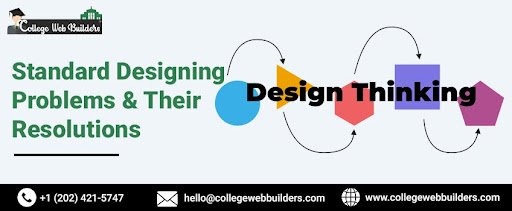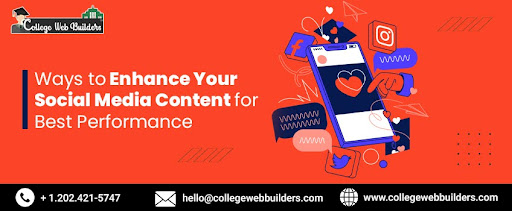
Standard Designing Problems & Their Resolutions
Any website designer can experience different design issues that should be tackled. In this section, we have discussed the three primary types of issues that can arise in web design and offered solutions to each of them. Hence, if you are just starting as a designer or have years of experience, keep reading for some helpful advice on our website designing agency Ashburn USA.
1) Low-Quality Content: Having a website that looks stylish and professional is crucial, but you should also ensure that the content is not amateur. Visitors' perceptions of a website are significantly influenced by its text. It doesn't matter how beautiful a design is if there are mistakes everywhere. When they see poorly written words or paragraphs full of misspelled words, people will quickly leave!
A website's effectiveness is dependent on its grammar. It restores any negative first impressions users may have of your website and boosts your credibility. It can be fatal if you have a serious grammatical error on your website. If there are any errors, visitors won't let this pass and will leave sooner than they entered!
Solution:
If you want your website to succeed, high-quality content is essential. You can make money from high-quality content by hiring graphic design services or a professional writer.
2) Use of Stock Photos and Unknown Images: Images of a low quality on a website will not only fail to capture visitors' attention, but they will also convey a lack of professionalism that may deter potential clients. Visitors won't stay for long if your website's images are not up to par, even if you have great content and a great website. Not only do stock photos confuse, but they also obscure the entire meaning of your website. This is because generic stock images lack creativity, which can be essential for influencing potential clients or customers.
Solution:
Images of high quality are well worth the money. It is essential to incorporate high-quality images into the design of your website to enhance its appeal. Images can grab people's attention right away, keeping them interested in what you have online for longer. A professional photographer can help you make more money.
3) Your font selection is excessive: Visitors to a website may become disoriented if there are too many fonts. They are more likely to wander off and look at all these different typefaces instead of paying attention to what you want them to read about or learn from the content on your website. As a result, they become more perplexed, making it difficult for users to distinguish between letters! In the end, it makes it harder to make an impression on potential customers.
Solution:
The design relies heavily on the fonts. The right typeface can make all the difference between a website that looks like it was made by someone with no skill or care and one that looks like a business. Keep in mind this rule: Choose four fonts for your website because using too many can look cluttered.
4) Slow or Delayed Website Response: Visitors will quickly find another place to spend their time if your website is sluggish and cumbersome. A website that loads quickly offers a better user experience, which keeps customers coming back and helps it rank highly on search engines. So you ought to continuously make a good attempt not exclusively to enhance speed yet in addition to ensure every one of the different components cooperates as well!
Solution:
The key to the performance of your website is your web host. Buy a dependable one and upgrade when you need more power for faster response times, better caching options, or just a smoother overall experience from beginning to end!
How to Avoid Designing Problems
Avoiding design problems is essential to ensure smooth and successful website designing services in Ashburn USA or around the world. Here are some key strategies and best practices to help you avoid common design problems:
Clearly Define Project Goals: Begin by clearly defining the goals and objectives of the design project. Have a clear understanding of what you want to achieve, the target audience, and the desired outcomes. This will provide a solid foundation for the design process and help you avoid unnecessary revisions or design changes later on.
Conduct Thorough Research: Before diving into the design, conduct thorough research on the industry, target audience, and competitors. Understand the latest design trends, user preferences, and best practices relevant to your project. This research will inform your design decisions and ensure that your design aligns with current standards and user expectations.
Create a Solid Design Brief: A design brief acts as a roadmap for the project. It outlines the project requirements, objectives, target audience, and any specific guidelines. By creating a detailed and comprehensive design brief, you provide clear direction to designers and minimize the risk of misunderstandings or misinterpretations.
Foster Effective Communication: Establish open and effective communication channels with the design team. Clearly communicate your expectations, provide constructive feedback, and address any concerns promptly. Encourage designers to ask questions and seek clarification when needed. Effective communication ensures everyone is on the same page and helps resolve potential design problems early on.
Prioritize User Experience (UX): User experience is crucial in design. Focus on creating designs that are user-friendly, intuitive, and meet the needs of your target audience. Conduct user testing and gather feedback throughout the design process to identify any usability issues and make necessary improvements. By prioritizing UX, you can avoid design problems related to usability and ensure a positive user experience.
Maintain Consistency: Consistency is key in design. Use consistent colors, typography, and visual elements throughout your design to create a cohesive and unified look. Inconsistencies can create confusion and make your design appear disjointed. Establish clear design guidelines and style guides to ensure consistency across different elements and design assets.
Test and Iterate: Test your designs before finalizing them. Conduct usability testing, gather feedback from users, and iterate based on the insights gained. This iterative approach allows you to identify and address any design problems or shortcomings early on, ensuring a more refined and effective design.
Stay Updated on Design Trends and Technologies: The design landscape is constantly evolving. Stay updated on the latest design trends, technologies, and tools. This knowledge will enable you to incorporate innovative and modern design elements into your projects and avoid outdated or ineffective design choices.
By following these strategies and best practices, your website designing company can significantly reduce the likelihood of design problems in your projects. Taking a proactive and thoughtful approach to design will result in more successful and impactful designs that meet your objectives and delight your audience.
Conclusion
Many entrepreneurs, websites, and visual architects have had a similar issue. After all, there are a lot of things to think about when designing a website, which can be quite challenging for businesses! You can avoid common design issues and create a website with a web designing company in Ashburn USA that is both user-friendly and visually appealing by adhering to our straightforward guidelines. We will discuss some of the most prevalent design issues and their solutions in this blog post. To know more about us, visit Collegewebbuilders.com.
- Tags: Marketing, Onlline, Internet





